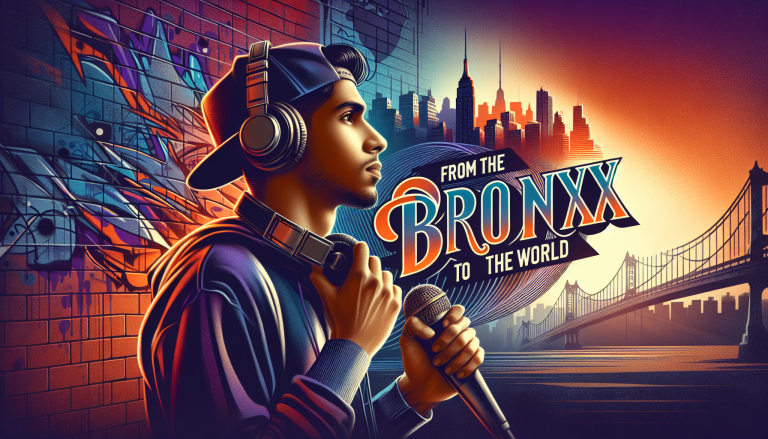The Birth of Hip-Hop: From the Bronx to the World
Picture this: it’s the early 1970s in the Bronx, New York City—a melting pot of cultural dynamism, economic struggle, and exploding creativity. Hip-hop wasn’t just music; it was a vibrant lifestyle born from the necessity of expression, community, and resistance. DJs like Kool Herc, often hailed as the genre’s grandmaster, pioneered the art of turntablism, isolating breakbeats from funk and soul records to ignite dance floors. This wasn’t merely entertainment—it was a sonic revolution, a way for marginalized voices to tell their stories over raw, rhythmic backdrops.
Hip-hop’s roots are deeply intertwined with American music traditions like jazz, blues, and funk, yet it stepped into its own as a distinct cultural force. The power of the MC—to amplify messages with sharp lyricism—gave the music a potent voice, challenging social injustices, celebrating urban life, and igniting a cultural movement that transcended its humble beginnings.
Defining Hip-Hop: More Than Just Beats and Rhymes

If dance music is the heartbeat of any party and EDM is the adrenaline rush that lifts crowds to euphoric peaks, hip-hop is the storyteller weaving narratives over a tapestry of rhythm. It’s characterized by its four essential pillars: DJing, MCing (rapping), breakdancing, and graffiti art. Within these elements lies a dynamic ecosystem—each one amplifying the genre’s spirit of innovation and expression.
Musically, hip-hop rides on sample-heavy beats, syncopated rhythms, and bold bass lines that command attention. But the soul of hip-hop lives in its lyricism: clever wordplay, storytelling finesse, social commentary, and rhythmic flow combine to create an oral art form as vital as any spoken language. It’s simultaneously a dance music companion and a cultural force, blending infectious grooves with messages that resonate deeply.
Architects of the Culture: Key Players Who Shaped Hip-Hop
No discussion of hip-hop can skip the trailblazers. DJ Kool Herc is the father figure, transforming block parties with his breakbeat innovation. Grandmaster Flash refined the art, pioneering mixing techniques that DJs globally emulate. Then emerged Run-D.M.C., who smashed down the barriers between hip-hop and mainstream music with their rock-infused beats and anthemic rhymes.
The late 80s and early 90s ushered in a golden era of lyricism and production, with legends like Nas painting vivid urban landscapes through albums like *Illmatic*. Tupac Shakur and The Notorious B.I.G. became iconic poets of the street, intertwining personal struggles and social realities with unforgettable charisma. Meanwhile, groups like Public Enemy used hip-hop as a megaphone for political activism, reinforcing the genre’s role in social consciousness.
In recent years, artists such as Kendrick Lamar and J. Cole have carried the torch forward, blending storytelling mastery with sonic innovation, proving hip-hop’s endless capacity to evolve while maintaining its roots.
Tracks That Transcended Time: Notable Songs and Albums
Hip-hop’s history is studded with seminal records that changed the game. Run-D.M.C.’s *Raising Hell* (1986) is a landmark album, its single “Walk This Way” (featuring Aerosmith) famously bridged rock and hip-hop, shattering musical boundaries. Public Enemy’s *Fear of a Black Planet* (1990) wielded stark political truths over hard-hitting beats, an anthem of resistance and empowerment.
Nas’s *Illmatic* (1994) offers poetic accounts of urban reality, its production a masterclass in sampling and mood. OutKast’s *Stankonia* (2000) pushed sonic boundaries with a fusion of funk, gospel, and futuristic beats, affirming hip-hop’s flexibility to absorb and reinvent.
More recent classics like Kendrick Lamar’s *To Pimp a Butterfly* (2015) infuse jazz, soul, and funk into the mix, creating a kaleidoscopic soundscape paired with incisive social commentary. These albums don’t just entertain—they provoke thought, inspire movements, and cement hip-hop’s stature as a critical voice in American music culture.
The Lasting Impact: Hip-Hop’s Cultural Resonance
Hip-hop’s influence has stormed far beyond its Bronx origins, leaping into global consciousness with staggering force. It’s no overstatement to say hip-hop has reshaped the landscape of American music and culture—inspiring fashion, language, visual art, and public discourse. The genre’s rhythm-driven energy found kinship all over the world, influencing dance music scenes, inspiring EDM producers to infuse hip-hop’s percussive complexity, and creating hybrid genres that thrive in today’s club environments.
Its cultural significance lies not only in entertainment but in its unflinching spotlight on systemic issues—racism, inequality, identity—which catalyzed activism and community empowerment. In the arena of American music, hip-hop broke barriers for diverse voices, democratizing music creation and consumption, and transforming the industry’s business models.
The genre’s DIY ethic birthed a new blueprint for artistic autonomy, while its lyrical narratives continue to archive the ever-changing social landscape. Today, hip-hop is a living, breathing entity, dynamically evolving yet unapologetically authentic—a pulse that keeps American music vibrant and endlessly fascinating.
Rhythm in Motion: From the Clubs to the Streets
As a DJ who’s spent countless nights mixing hip-hop anthems with EDM drops to electrify the dance floor, I can tell you this: the magic of hip-hop is in its kinetic energy. The way it compels bodies to move, minds to think, and cultures to converge is nothing short of revolutionary. Dance music’s universal appeal finds roots here—in hip-hop’s rhythm, flow, and bold spirit.
In the ever-expanding galaxy of music, hip-hop remains a cornerstone genre—part historical narrative, part dance floor dynamo, part social commentary—all riding a groove that refuses to stop. It invites us to listen closely, move freely, and celebrate a cultural tapestry woven through beats, bars, and boundless creativity. So next time you hit the club or crank up your playlist, let your ears savor the rich tapestry of American music that hip-hop so brilliantly represents.